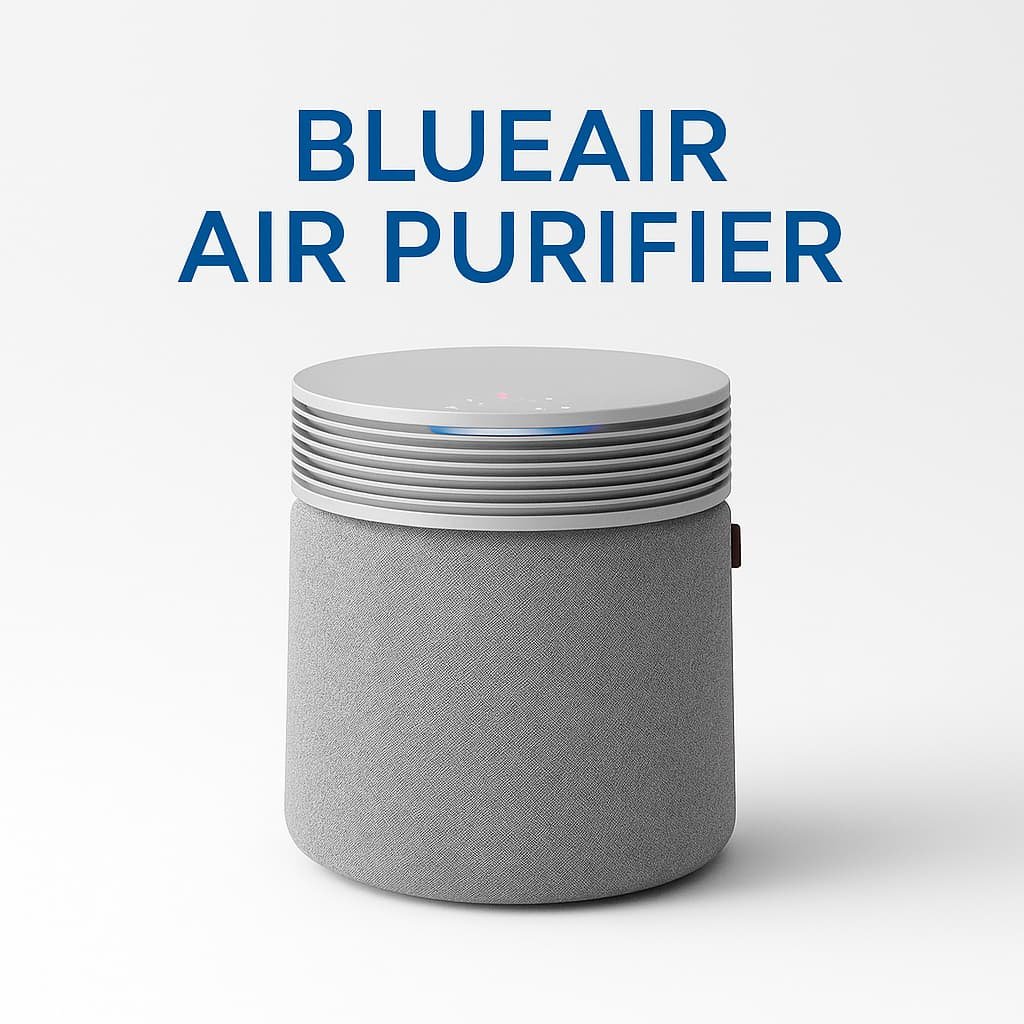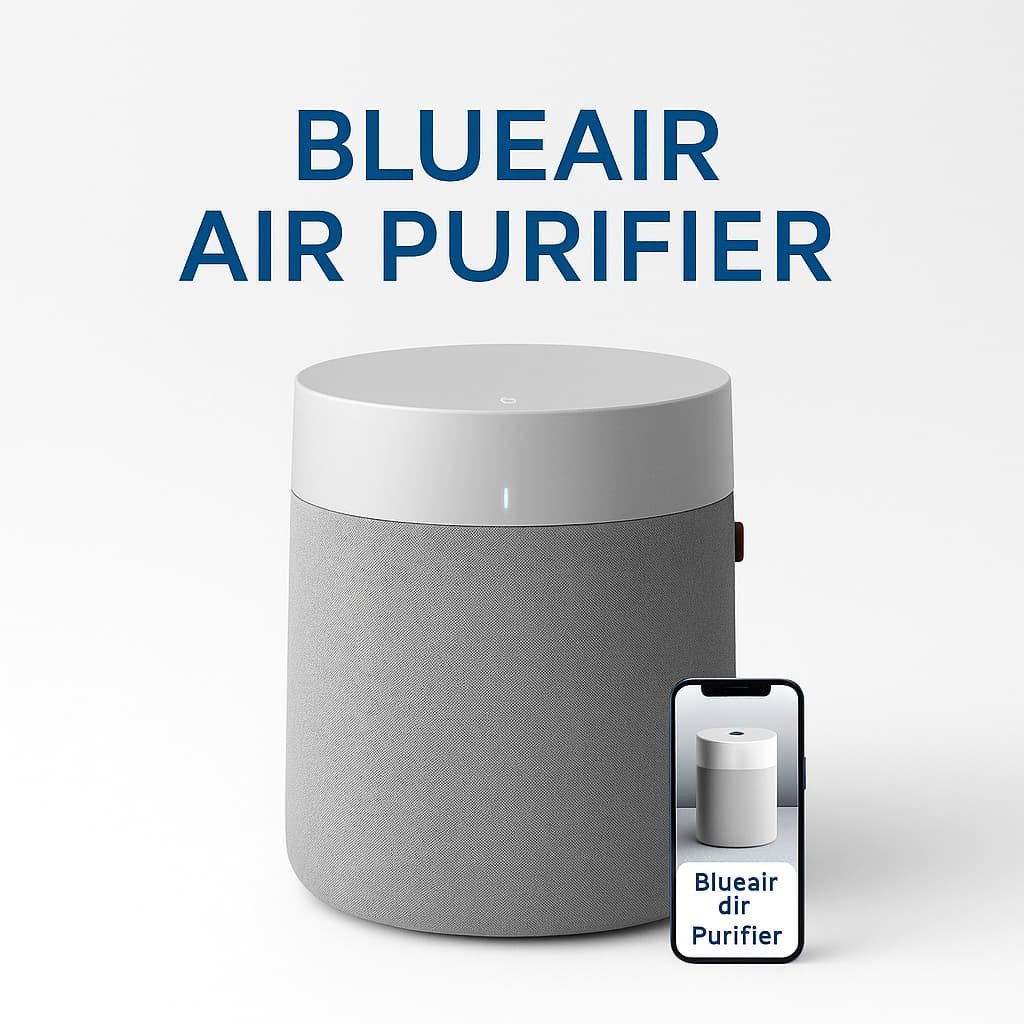Indoor air quality isn’t a luxury issue anymore — it’s an imperative of health. As pollution, allergens, and viruses are all around us, more and more people are relying on air purifiers to protect their families. Among top brands in this space, the Blueair air purifier stands out for its harmony of performance, aesthetics, and ultra-quiet operation.

If you’re considering buying one but don’t know which model to choose, this Blueair air purifier buying guide will help you choose an appropriate model for your needs. We’ll cover everything from room size and filter type to smart features and maintenance — so you can make an informed, stress-free choice.
Why Buy a Blueair Air Purifier?
Blueair, a Swedish brand, has developed an international reputation for air purification innovation. With Blueair technology, the air purifier is distinguished by its HEPASilent™ technology — mechanical and electrostatic filtration combined which cleans 99.97% of particles as fine as 0.1 microns from the air. That includes dust, pollen, mold spores, smoke, and even some bacteria and viruses.
As opposed to older purifiers that become loud with increased fan speeds, Blueair models stay quiet while still providing strong air cleaning. They’re also built with clean-lined Scandinavian design, so they look at home in any contemporary home or office.
1. Determine Your Room Size and Coverage Area
Before buying a Blueair air purifier, start by measuring the space where you’ll use it. Each Blueair model lists a recommended room size, usually based on how many air changes per hour (ACH) it can deliver.
- Small rooms (up to 180 sq. ft): The Blue Pure 411i Max is perfect for bedrooms, dorms, or offices.
- Medium rooms (up to 350 sq. ft): The Blue Pure 211+ Auto strikes a balance of power and quiet for living rooms or kitchen applications.
- Large rooms (up to 600 sq. ft or larger): The HealthProtect 7470i or DustMagnet 5440i will efficiently and effectively clean large rooms.
Always size up if your space is close to the upper limit. A larger Blueair air purifier won’t just clean faster — it’ll also run more quietly at lower speeds.
2. Understand Blueair’s Filtration Technology
The heart of every Blueair air purifier is its HEPASilent™ filtration system. It’s different from the standard HEPA filters you’ll find in cheaper purifiers.
How It Works
- Electrostatic charging retains and attracts substances like dust, pollen, and smoke.
- Mechanical filtration traps residual impurities.
- Activated carbon filters remove odors, gases, and VOCs.
Composed together, these provide high efficiency with low energy consumption and low sound level. It’s one of the key reasons Blueair machines have a tendency to outperform typical HEPA machines in independent tests.
3. Noise Level and Energy Efficiency
No one requires a vacuum-like purifier. The most significant advantage of a Blueair air purifier is its inaudibility.
Most models emit no more than 17–23 dB on low speed — less than a library. Even at the top setting, they rarely exceed 50 dB. That makes them well-suited to bedrooms, nurseries, and offices.
They’re also Energy Star rated, which means they guzzle electricity even when they’re operating 24/7. Even a small Blueair air purifier might use under $10 worth of electricity annually.
4. Smart Technology and App Control
More recent Blueair air purifier models are more than a fan with a filter — they’re intelligent technology.
With the Blueair app, you can:
- Monitor indoor and outdoor air quality in real time.
- Adjust fan speeds remotely.
- Schedule purification cycles.
- Reminds you when it’s time to change the filter.
Some high-end models even feature Auto Mode, which uses built-in sensors to detect pollutants and automatically change fan speed. If you have furry friends at home or reside in a large city, this feature is a godsend.
5. Filter Replacement and Maintenance
No air cleaner can realistically function without regular filter replacement — and that includes your Blueair air cleaner as well.
Blueair advises replacing filters every 6 to 12 months, based on use and air quality. All but the most basic of models will have an indicator light to alert you when it’s time.
Use only genuine Blueair filters. Although third-party filters may seem like a cheap alternative, they will often skimp on performance, airflow, and even safety. Genuine filters ensure the unit is working at certified efficiency and filtration rate.
Cleaning is also simple. Just wipe the outside with a dry cloth, vacuum the space around the air intake opening occasionally, and keep the sensors free of dust.
6. Blueair Model Comparisons
Here’s a quick comparison of popular Blueair air purifiers so you can make an informed choice:
| Model | Room Size | Standout Features | Ideal For |
|---|---|---|---|
| Blue Pure 411i Max | Up to 219 sq. ft | Compact, quiet, affordable | Bedrooms, offices |
| Blue Pure 211+ Auto | Up to 635 sq. ft | Auto mode, washable pre-filter | Living rooms |
| HealthProtect 7470i | Up to 418 sq. ft | Germ-killing filtration, smart sensors | Allergy patients |
| DustMagnet 5440i | Up to 355 sq. ft | Dual inlets, clean design | Pet or dust dwellings |
| Blue Pure 121 | Up to 620 sq. ft | Simple one-button operation | Large spaces |
Each Blueair air purifier design offers something special — from ease of use to advanced technology. Consider what matters most to you: quietness, smarts, or design.
7. Cost vs. Long-Term Value
The initial cost of a Blueair air cleaner may be steep relative to economy brands. Yet, the long-term savings are worth it.

Here’s why:
- Quality built-in: Durable, recyclable materials.
- Easy maintenance: Simplified filter replacements, low cleaning needs.
- Energy efficiency: Efficient motors that save energy.
- Health advantages: Improved sleep, reduced allergies, better health.
If you factor in filter longevity and energy use, the yearly cost of ownership is relatively low — especially for the air quality benefit it gives.
8. Getting the Most from Your Blueair
Once you’ve bought a Blueair air purifier, get the most from it with some easy habits:
- Close windows and doors when in operation.
- Put it at least six inches away from any wall to allow airflow.
- Run it continuously on Auto Mode or low speed for consistent performance.
- Clean pre-filters every few weeks (if washable).
- Use it in combination with the Blueair app for live insights.
A Blueair air purifier is not one-time installation — it’s part of living healthy. Routine usage will maintain your home’s air fresh and secure all year round.
🛒 Where to Buy (Amazon Affiliate Links)
If you’re ready to improve your home’s air quality, check out these recommended Blueair air purifier models available on Amazon:
- BLUEAIR Air Purifier for Large Rooms & Home-3385 ft²
- Blueair Blue Pure 211+ Auto – Ideal for Medium Spaces
- BLUEAIR 2-in-1 Purify + Humidify: Air Purifier-360°
- Blueair Blue Pure 121 – Great for Large Rooms
(Affiliate Disclaimer: As an Amazon Associate, I earn from qualifying purchases — at no extra cost to you.)
Final Thoughts
One of the smartest health investments you can make is buying a Blueair air purifier. If you’re fighting allergies, live in a polluted area, or just want cleaner air for your family, Blueair has uncompromising performance driven by science and design.
Take the time to choose the right model for your home and your way of life. Think about coverage space, features, and filter type — and remember, the ideal Blueair air purifier is one that fits your specific needs.
Clean air isn’t something luxurious — it’s essential. With Blueair, it’s also easy, efficient, and beautiful.